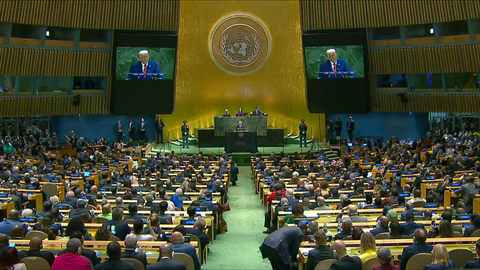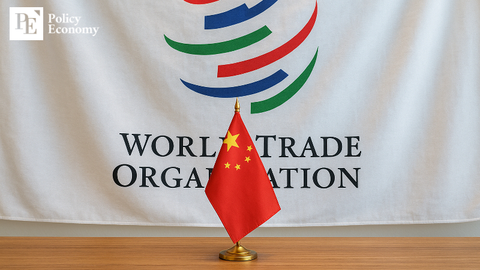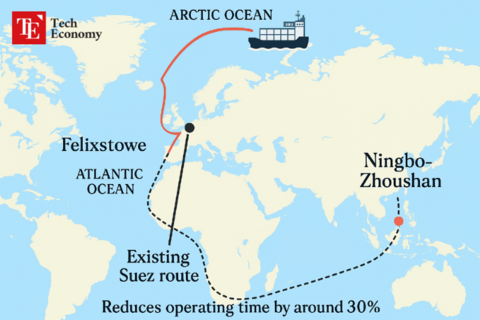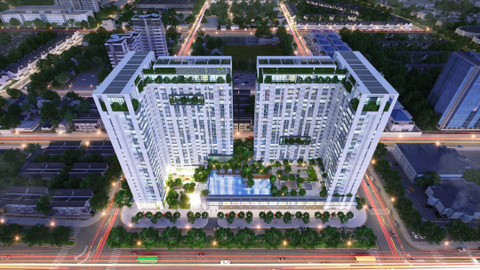Argentina’s Economy Falters Under Policy Failures, U.S. and IMF Signal Support
Input
Modified
U.S. Vows Strong Support for Key Ally Argentina Argentina Faces Economic Crisis Under Milei’s Austerity Measures Falling Birthrates and Aging Population Further Weaken Growth Momentum

The Trump administration has pledged strong support for Argentina as the country struggles with an IMF-driven economic crisis. With President Javier Milei’s austerity measures dragging the nation deeper into recession, Washington is moving to prop him up—highlighting tools such as currency swaps and other aid programs as part of a broader effort to “rescue Milei.”
U.S. Extends a Hand to Argentina
On the 22nd, U.S. Treasury Secretary Scott Bessent wrote on X that “Argentina is an important ally of the United States in Latin America, and the Treasury stands ready to do whatever is necessary within its mandate to support Argentina.” He outlined possible measures including currency swaps, direct dollar purchases, and U.S. Treasury’s Exchange Stabilization Fund operations in Argentine dollar-denominated bonds, while stressing these were “not exhaustive.”
The following day, President Donald Trump met Argentine President Javier Milei at the U.N. headquarters in New York and announced that the World Bank would inject $4 billion into Argentina over the coming months. Speaking to reporters, Trump said, “We are going to help them,” adding, “I don’t think a bailout is necessary.” He also noted that “Scott [Bessent] is working to ensure Argentina has everything it needs to pay its debts and make the country great again,” while expressing support for Milei’s bid for re-election.
The World Bank confirmed in a statement the same day that it would provide $4 billion in funding for public sector financing and private sector investment in the coming months. It added that the support would accelerate a total $12 billion package for Argentina, aimed at backing the country’s reform agenda and long-term growth. The Bank said funds would target sectors such as mining and critical minerals, tourism as a driver of jobs and regional development, expanded energy access, supply chain resilience, and small and medium-sized enterprise financing.
Argentina Reels From Deep Recession
The U.S. push to support Argentina comes as the country’s economy sinks deeper into crisis. President Javier Milei has implemented free-market austerity measures to curb runaway inflation. The approach has delivered results on one front: monthly inflation, which had soared to 26% in December, eased to 1.9% by July.
But the side effects have been severe. To bolster the peso, the government intervened heavily in foreign exchange markets, rapidly depleting Argentina’s reserves. The country now lacks sufficient dollars to repay creditors, including $4.5 billion in dollar-denominated bonds due in January. Meanwhile, the stronger peso has eroded export competitiveness, and an influx of cheap imports such as shoes and clothing has battered Argentina’s labor-intensive manufacturing sector.
The broader economy has stumbled into recession. GDP contracted in the second quarter, while unemployment rose from 5.7% at Milei’s inauguration to 7.6%, with roughly 200,000 jobs lost. Milei’s promises of a V-shaped recovery, job creation, and economic stability have, for now, turned out to be little more than a mirage.

“Only the Elderly Are Increasing”: Argentina’s Demographic Shift
Argentina’s long-term growth outlook is clouded by a dramatic demographic transformation. With birth rates plunging, the share of young people who should drive future economic growth is shrinking fast. A study published in May by the Human Development Observatory at Universidad Austral, based on data from the National Institute of Statistics and Census (INDEC), found that Argentina’s birth rate has fallen by 40% since 2014—the steepest drop in Latin America.
The 2022 census underscores the trend. Households without children under 18 accounted for 57% of the total, up from 44% in 1991. Conversely, households with children fell from 56% to 43% over the same period. The proportion of households with residents aged 65 and older rose from 25% to 35%, while the share of people aged 85 and above jumped from 1.5% to 11.8%.
The findings raise serious questions about Argentina’s future social structure. Rapidly declining birth rates and accelerating aging threaten to shrink the labor force, slow economic growth, and strain the sustainability of social welfare systems. Experts warn that the government must urgently conduct deeper analysis of these shifts and develop multifaceted policies to ensure long-term social and economic stability.






















Comment